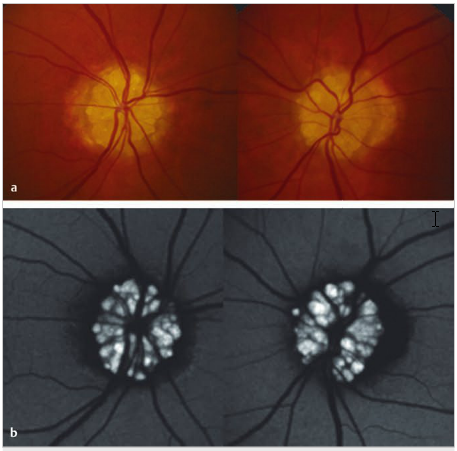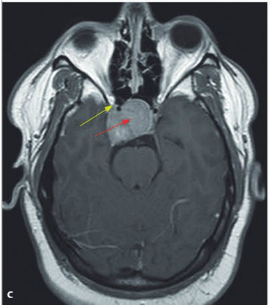Questions:
1. How frequently are drusen present in the general population?
2. What techniques may be useful to demonstrate buried disc drusen?
3. What should be done with symptomatic patients with optic disc drusen?
4. What test should be done in all patients with optic nerve hypoplasia?
5. When is a visual field defect expected to be seen with intraocular myelination?
6. What visual field defect would be most likely with intraocular myelination?
7. What test should be done in patients with optic disc coloboma or the “morning glory” disc anomaly?
8. What visual field defect may be associated with tilted discs?
9. What findings are likely with an optic disc pit?
 1
1
Archives for November 2017
Neuro-ophthalmology Questions of the Week: Optic Nerve Anomalies
Neuro-ophthalmology Questions of the Week: Traumatic Optic Neuropathy
Questions:
1. What should be checked on all head trauma patients?
2. What are the mechanisms of traumatic optic neuropathy?
3. What imaging should be ordered when traumatic optic neuropathy is suspected?
4. What treatment is usually required for direct traumatic optic neuropathies?
5. What treatment is usually required for indirect traumatic optic neuropathies?
 1
1
Neuro-ophthalmology Questions of the Week: Toxic and Nutritional Optic Neuropathies
Questions:
1. Are cases of toxic or nutritional optic neuropathies likely to be caused by a single agent?
2. Is vision likely to recover with discontinuation of the toxin or vitamin deficiency supplementation?
3. What are the common agents that cause toxic optic neuropathies?
4. What are the common agents that cause nutritional optic neuropathies?
5. What condition do the fundus findings of amiodarone toxicity often resemble?
6. What should always be checked in patients with progressive bilateral visual loss and bilateral optic atrophy?
 1
1
Neuro-ophthalmology Questions of the Week: Compressive and Infiltrative Optic Neuropathies
Questions:
1. What is the most common cause of compressive optic neuropathy?
2. Are pilocytic astrocytoma and optic nerve glioma more common in adults or children?
3. Do anterior or large intraorbital lesions often produce optic disc swelling?
4. Is there usually pain on eye movement with compressive optic neuropathy?
5. Is cupping uncommon in chronic compressive optic neuropathy?
6. What neuroimaging studies should be obtained for suspected compressive optic neuropathy?
7. Are episodes of transient monocular visual loss common in optic nerve sheath meningiomas?
 1
1